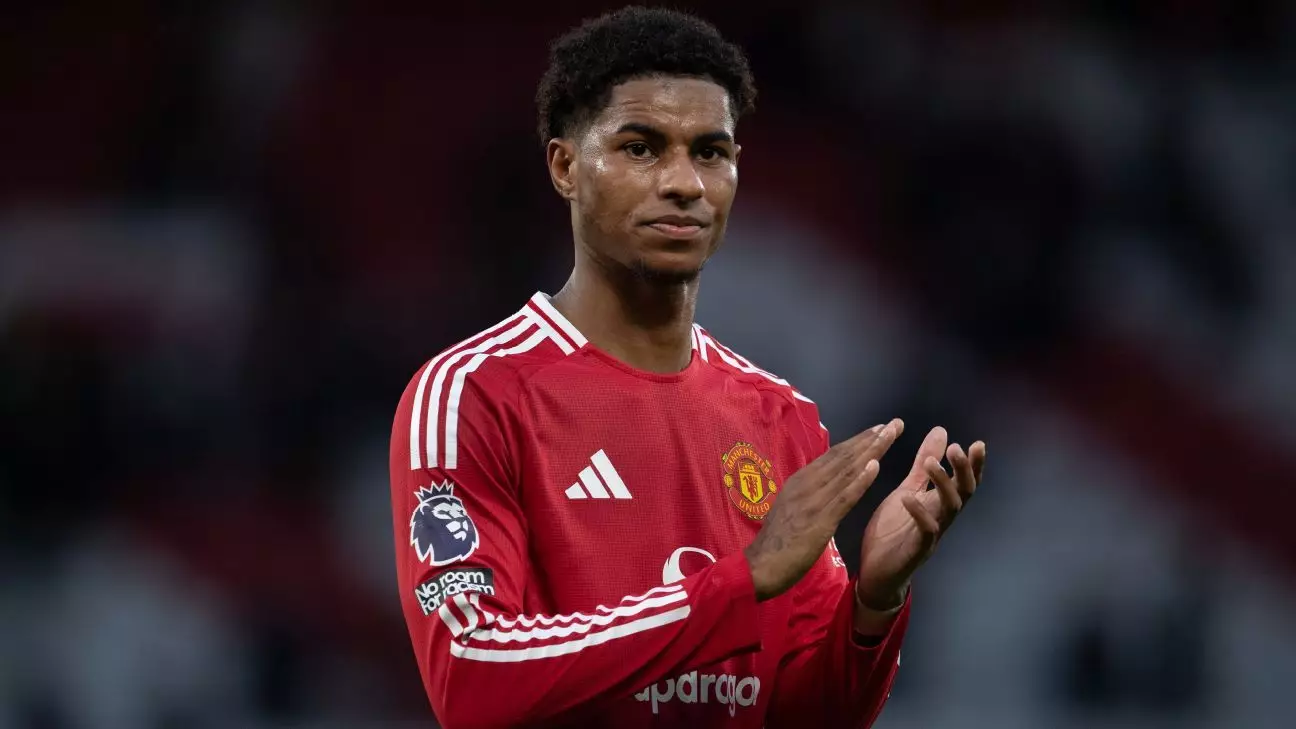Marcus Rashford is back with the Manchester United squad after a notable absence that stretched over four matches, a situation fueled by his performances on the training field and personal circumstances. Head coach Ruben Amorim made the decision to reintroduce the 27-year-old forward as they prepared to face Newcastle United at Old Trafford, marking a critical juncture for both the player and the club. Rashford’s last on-field participation was against Viktoria Plzen in the Europa League on December 12, where he contributed to a 2-1 victory. His return comes at a time when United is grappling with player suspensions and form challenges.
The Silence Between the Lines
Rashford’s seat on the bench during the match against Newcastle is particularly telling. After being sidelined for the Manchester City match, Amorim cited a need for improvement in Rashford’s training attitudes as a primary reason for his exclusion. In the aftermath, Rashford’s statements regarding his desire for a “new challenge” suggested deeper issues within the club’s culture and player satisfaction. This raises questions about player management and how open dialogues about performance and future aspirations are handled within elite football clubs.
Rashford’s candid comments about wanting to leave amplify the underlying tensions within the club’s dynamics, as players sometimes internalize their struggles, leading to public statements that can complicate management’s approach. While Amorim expressed a desire to retain Rashford’s talents, there is an undeniable reality: Manchester United is reportedly open to offers in the January transfer window. This duality reflects the uncertainty that commonly pervades big clubs—both in terms of player satisfaction and transfer strategies.
The timing of Rashford’s return could not be better for United. With key players Bruno Fernandes and Manuel Ugarte sidelined due to suspensions, the need for Rashford’s presence becomes even more critical. His ability to score goals and create opportunities could be vital in ensuring that United remains competitive during this tumultuous stretch. Amorim’s explanation of Rashford’s re-entry reflects a strategic inclination to utilize depth amidst challenges, which may indicate a shift towards a more adaptable approach in team selections.
Amorim defended his choices regarding the squad, stating, “Like I say every week, I choose my players,” projecting confidence in his decision-making, even during periods of upheaval. The coach’s faith in Rashford’s potential to impact the game amidst his current struggles shows a layer of understanding and support that could either embolden the player or apply additional pressure.
As Manchester United navigates through these next essential matches, the focus will not only be on immediate performance but also on how Rashford integrates back into the squad’s fabric amid whispers of discontent. His presence can potentially stabilize a wobbly attack, yet unresolved issues could cloud his effectiveness. Whether Rashford fully embraces the challenges ahead or continues to contemplate his future with the club remains to be seen. What is clear, however, is that this pivotal moment could either propel his career in a positive direction or signal a more dramatic change to come in the New Year.

